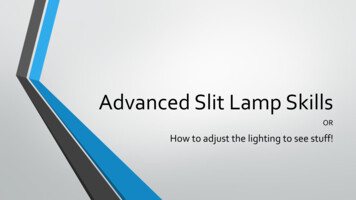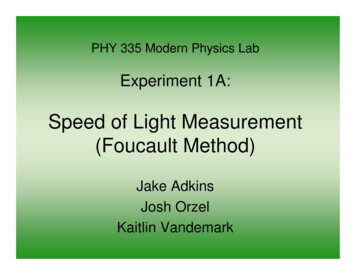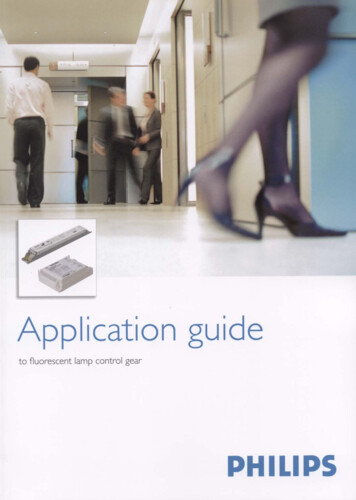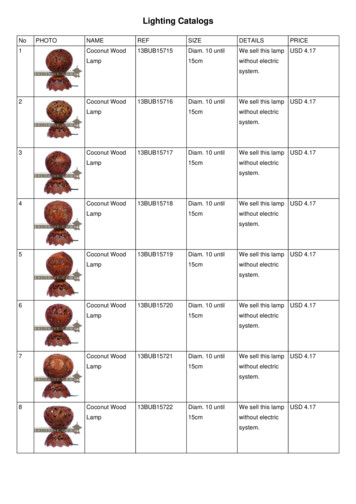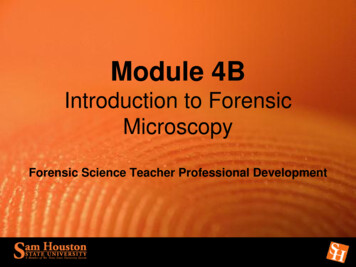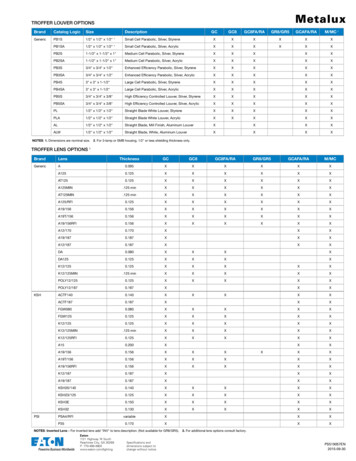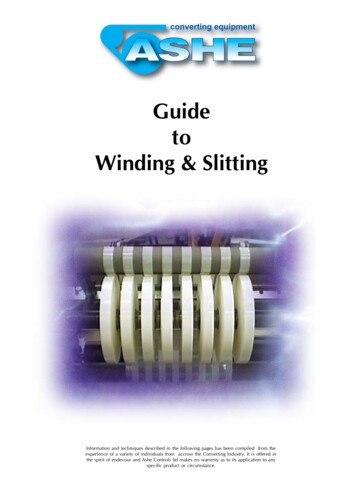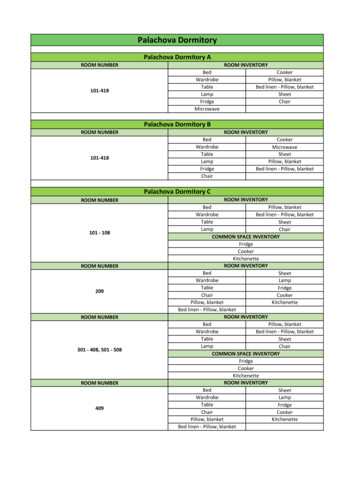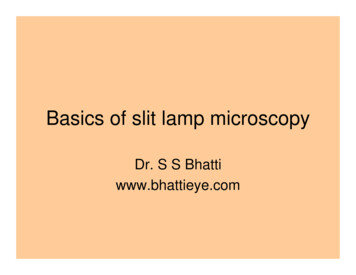
Transcription
Basics of slit lamp microscopyDr. S S Bhattiwww.bhattieye.com
The 2 basic parts of the slit lampbiomicroscope are: The slit lamp (illumination system) The biomicroscope
The illumination system can be1. Of the Zeiss type2. Of the Haag Streit type
In the Zeiss type the illuminationcomes from below
In the Haag Streit type theillumination comes from above
In both types of illumination systemthe Kohler illumination principle isused:The filament is imaged on to the objective lens but themechanical slit is imaged on to the patient’s eye
The biomicroscope:based on the optics of a compoundmicroscope Two basic types:– The Grenough type– The Galilean changer type
The Grenough type(Classical HaagStreit)Flip lever to changemagnification
The Galilean Magnification changerKnob to changemagnification (3or 5step)
ObjectiveGalilean magnification changer
Magnification can also be changedby changing the eyepiece power10 X16 X
The slit lamp and the biomicroscopeare maneouvred together on a crossslide by means of a joystick
The coupling between the slit lampand the biomicroscope This is such as to make the system“parfocal” i.e the focus of the slit and the focus of themicroscope are at the same point. This parfocality may occasionally need tobe dissociated as for example in thetechnique of sclerotic scatter
The coupling between the slit lampand the biomicroscope This allows both theslit and themicroscope to rotateabout the point offocus (i.e the eye)
Dissociation of parfocality can be done in“Haag Streit” type slit lamps by looseningthe sclerotic scatter knob
This dissociation of parfocality isuseful for indirect illumination,sclerotic scatter and retroillumination
The key to successfulexamination of theanterior segment isknowledge of thevarious methods oflighting which can beachieved by the slitlamp.
Diffuse illumination Not all slit lamps havethis option
Diffuse illumination for surfacedetails
Diffuse illumination
Diffuse illumination
Diffuse illumination
Focal broadbeam illumination
Broad beamNarrow beam
Focal broad beamBusacca’s noduleon iris
Knob to widen beam
Focal slit illumination
Focal slit illumination
Retroillumination- against red glow
Retroillumination- YAG pits on clawIOL
Indirect illumination(similar tosclerotic scatter)
Sclerotic scatter
Knob for sclerotic scatter allows slitbeam to be horizontally rocked
Parfocality of slit and viewingaltered for sclerotic scatter
Sclerotic scatter
Specular illumination
Filter turret
With additional dyes
CollageBroad beamRetroilluminationagainst red glowslitRetroilluminationagainst lens
Lens precipitatesDiffuseilluminationFocalillumination
SPKS- a collage
Krukenberg spindle
Traumatic rosette cataract
Anatomy of the angle
Normally the angle of the anterior chambercannot be seen as light from it cannot exitfrom the eye due to total internal reflection atthe cornea
A gonioscopy lens allows light fromthe angle to exit the eye byeliminating the cornea air interfaceGoldman gonioscopy lens
Direct GonioscopyKoeppeGonioscopyKoeppegonioscopy lenslens
Angle recession
Trabecular pigmentation
Fundus examinationcan be done with aslit lamp with the useof ancillary lenses Ancillary lenses arerequired to neutralizethe refractive powerof the cornea .
Use of the short reflex mirror is recommended forposterior segment examination because the upwardprojection of the long mirror blocks one of the eyepieces when the illumination is kept at a small 3-5degree angle from the binocularHowever, the illumination beamcolumn must then be tilted elsethe illumination beam will fallpartly outside the mirror reducingthe illumination entering the eye
Broad beamNarrow beam
Some contact Fundus slitlamplensesMainsterHighMagnificationMainster standardMainster PRP(widefield forpanretinalphotocoagulation)
Fundus view with slitlamp andMainster contact lens
Slit lamp examination with a Volkquadraspheric contact lens(dislocated crystalline lens)
Use of the short reflex mirror is recommended for posterior segment examination because the upward projection of the long mirror blocks one of the eye pieces when the illumination is kept at a small 3-5 degree angle from the binocular However, the illumination beam column must then be tilted else the illumination beam will fall

